Truth be told, I didn’t have enough time in Aruba on my most recent trip to be able to speak personally about each one of the experiences on this list. This guide is based on a combination of personal experiences, and strong referrals from others, both from locals and tourists who have been coming to Aruba for years. In other words, regulars.
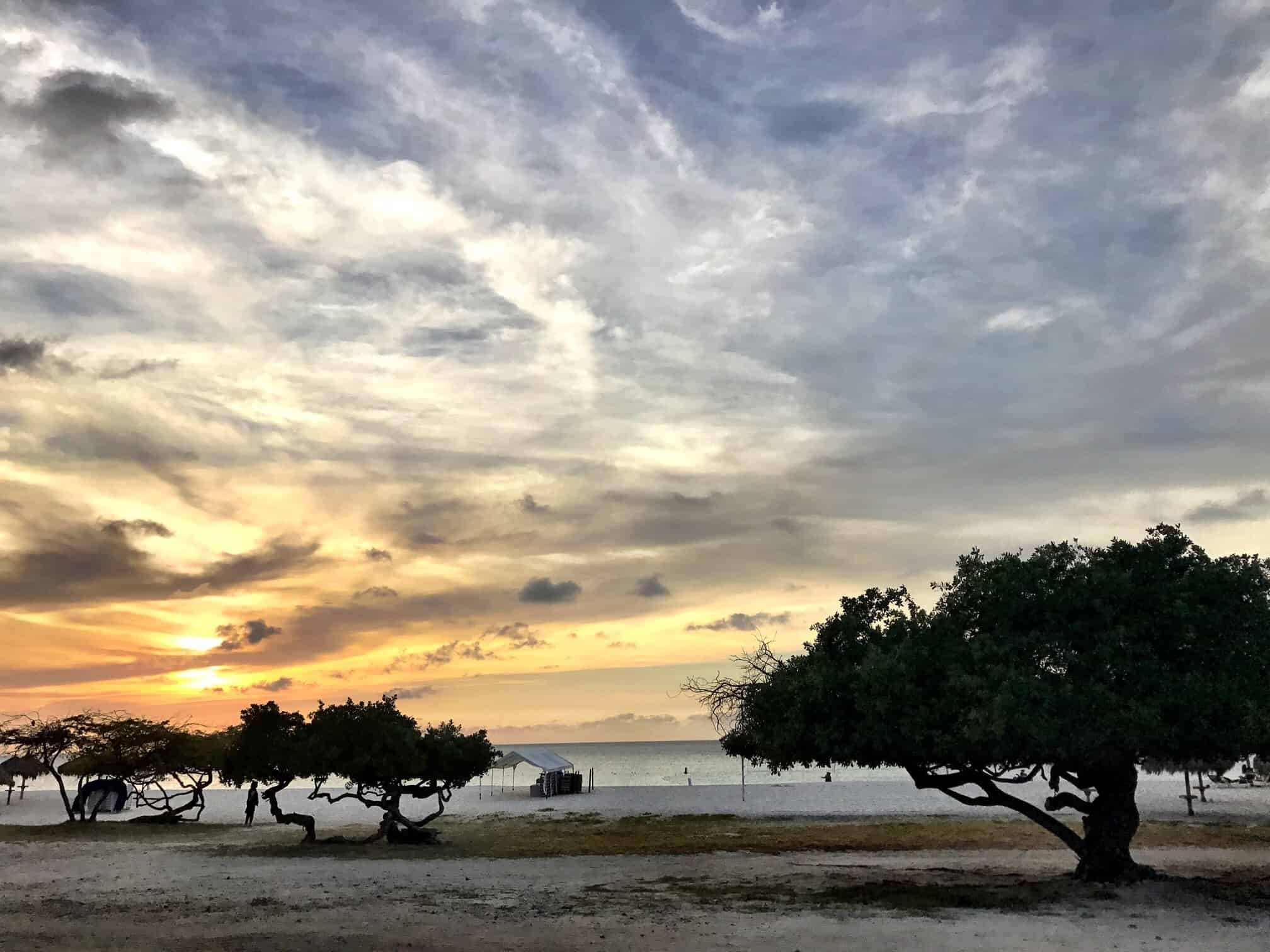
Above and below, unedited sunsets I shot at Eagle Beach before having dinner on the beach one night.
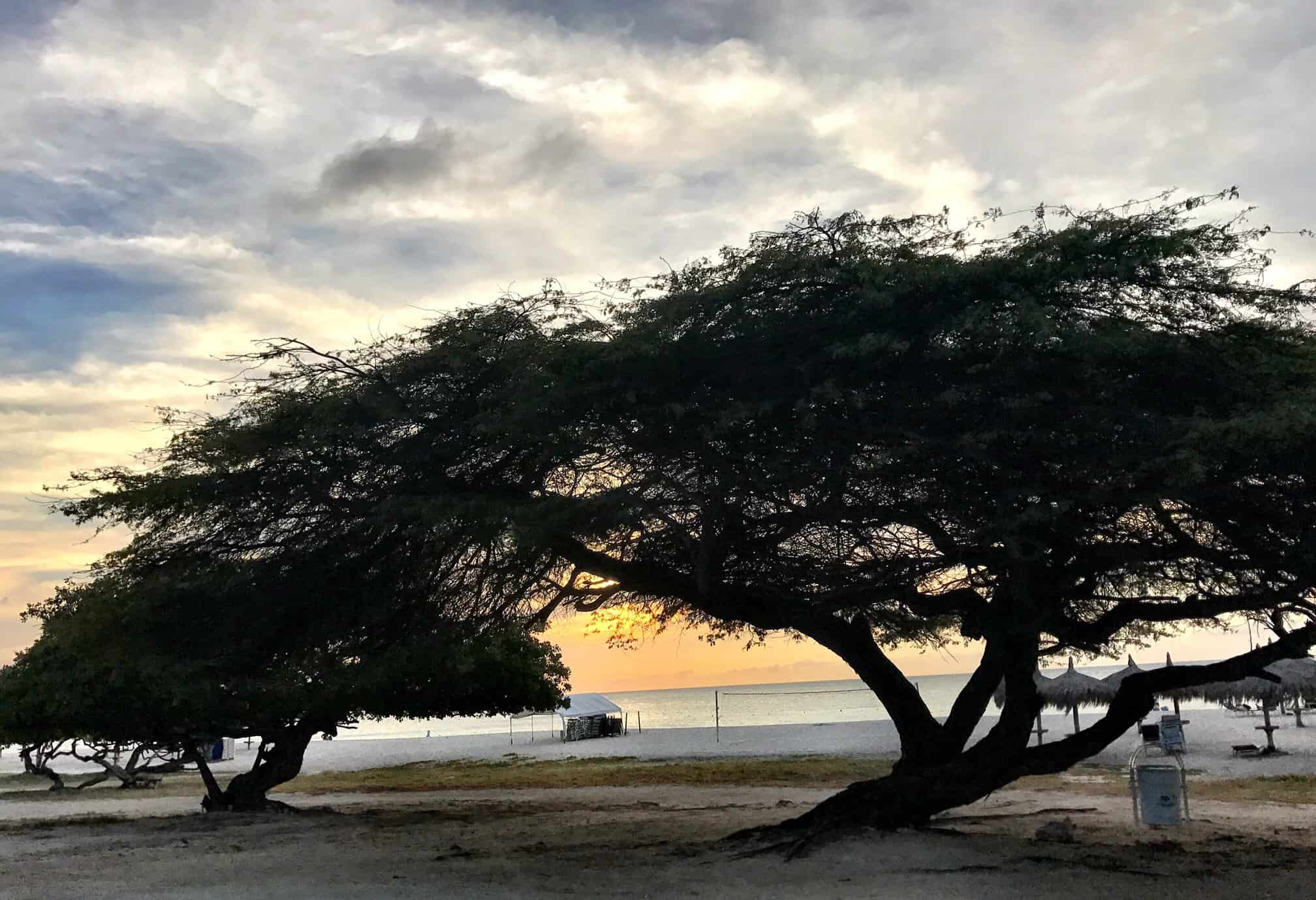
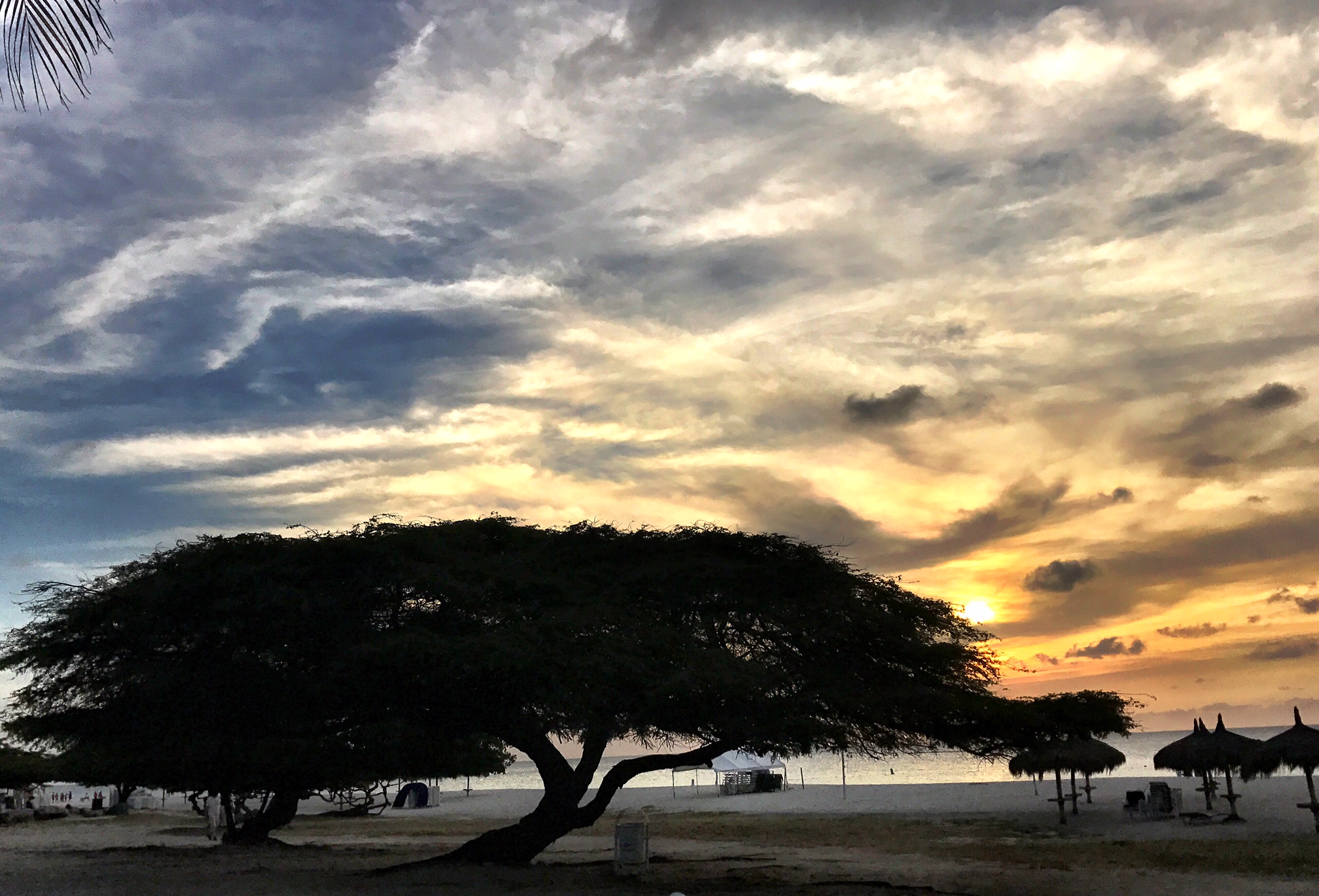
I’m going to start with the raw beauty since it is the part of the island that many tourists may not think of, since the coast is feathered with high rise luxury resorts for several miles and the strip where most flock to. If you stay at a main brand property to get pampered or for the amenities, especially great if you’re traveling with kids, I’d still suggest setting aside a day or two to explore the wilder side of the island. Speaking of hotels, read my write-up on the Marriott, which makes a great family stay.
Even though Aruba extends for only 70 miles, there’s very different energy on Aruba’s northeastern coast than what you’d find on the hotel strip and in and around Oranjestad, which btw, has lots of fabulous restaurants. Be sure to read my Aruba Foodie Guide.
In the north, you’ll find limestone cliffs, desert and stunning wildlife, particularly in Arikok National Park, which I didn’t have a chance to visit. Like most national parks, the wildlife is most active in the morning after sunrise and end of day, but both are the best times of day for light as well, which means photography heaven.
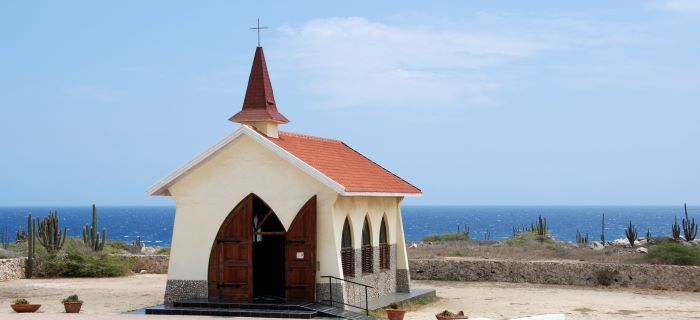
Alto Vista Chapel Photo credit: ArubaTravelGuide.com (useful resource also)
Other things you’ll take in beside dunes, savannah-like hills and rocky cliffs, are wild goats, donkeys, parakeets, whiptail lizards and the indigenous burrowing owl called the shoco. Love the name. And, a chapel in the middle of nowhere — see the ever so lovely Alto Vista Chapel above with stunning views of the sea in the distance.
Inside the Arikok National Park, you can experience Guardirikiri Cave, which has two chambers inside. Depending on the time of day, you’ll get extreme sunlight coming through the roof’s holes and if you’re a stalagmite and stalactite fan, you should visit the Fontein Cave, which boasts ancient Arawak Indian pictographs and early 17th century European graffiti. How cool is that?
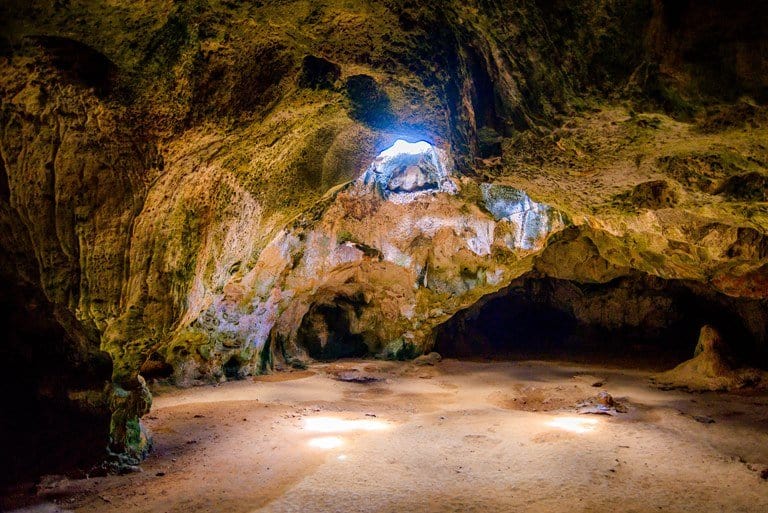
Guardirikiri Photo credit: Aruba.com. The Aruba Natural Bridge (below) was formed naturally out of coral limestone and collapsed in 2005.
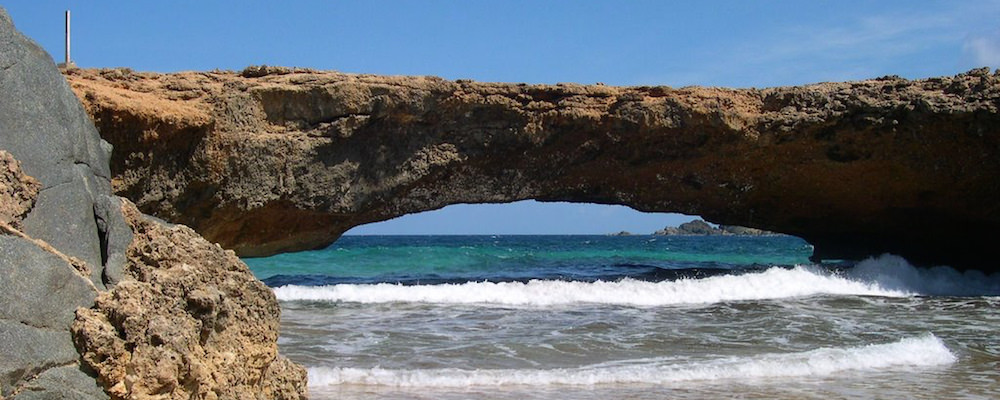
Aruba Natural Bridge photo credit: www.beachesofaruba.com (check out their site for more information and great beach tips)
Beaches
Aruba is known for its pristine beaches, from the lesser visited ones like Boca Prins Beach where there’s no shortage of crabs running about, to Dos Playa Beach, which locals flock to for picnicking.

Above Boca Prins, credit to Beaches of Aruba (beachesofaruba.com) and below, another view/perspective.

Photo credit: Aruba.com
Daimari Beach is a great spot to go horseback riding and if you have kids in tow and want to go swimming, theres’s a Natural Pool where you can swim among exotic colorful fish.
Also a favorite for swimming (and snorkeling) is Malmok Beach which is calmer than some of the others. The water is also shallow which means it’s a great choice for kids as well. Its located on the west coast, which is also where you’ll find the German shipwreck Antilla, from 1940.

Photo credit: Tropical Snorkeling – check out their site as its a great resource: http://www.tropicalsnorkeling.com/aruba-snorkeling.html.
Hadicurari Beach is the spot to go for windsurfing. You’ll also find kitesurfers here. Also on the west coast is one of the most beautiful beaches Palm Beach, which is another great spot for families. Known for its calm waters as well, you can also sail, snorkel or grab a drink since they do have bars and restaurants on this strip as well. Other calm beach spots include Boca Catalina, which is more of a secluded bay with reef nearby, Mangel Halto Beach, which is not only calm and shallow but has stunning views and mangroves, and Arashi Beach which has a lighthouse nearby. Snorkeling is meant to be good here as well.
Eagle Beach, where I stayed, has plenty of water activities and beach cabanas, as well as places to stop and grab a drink or even dinner on the beach. See my review of Atardi, which has divine romantic dining (shoes off) at sunset.
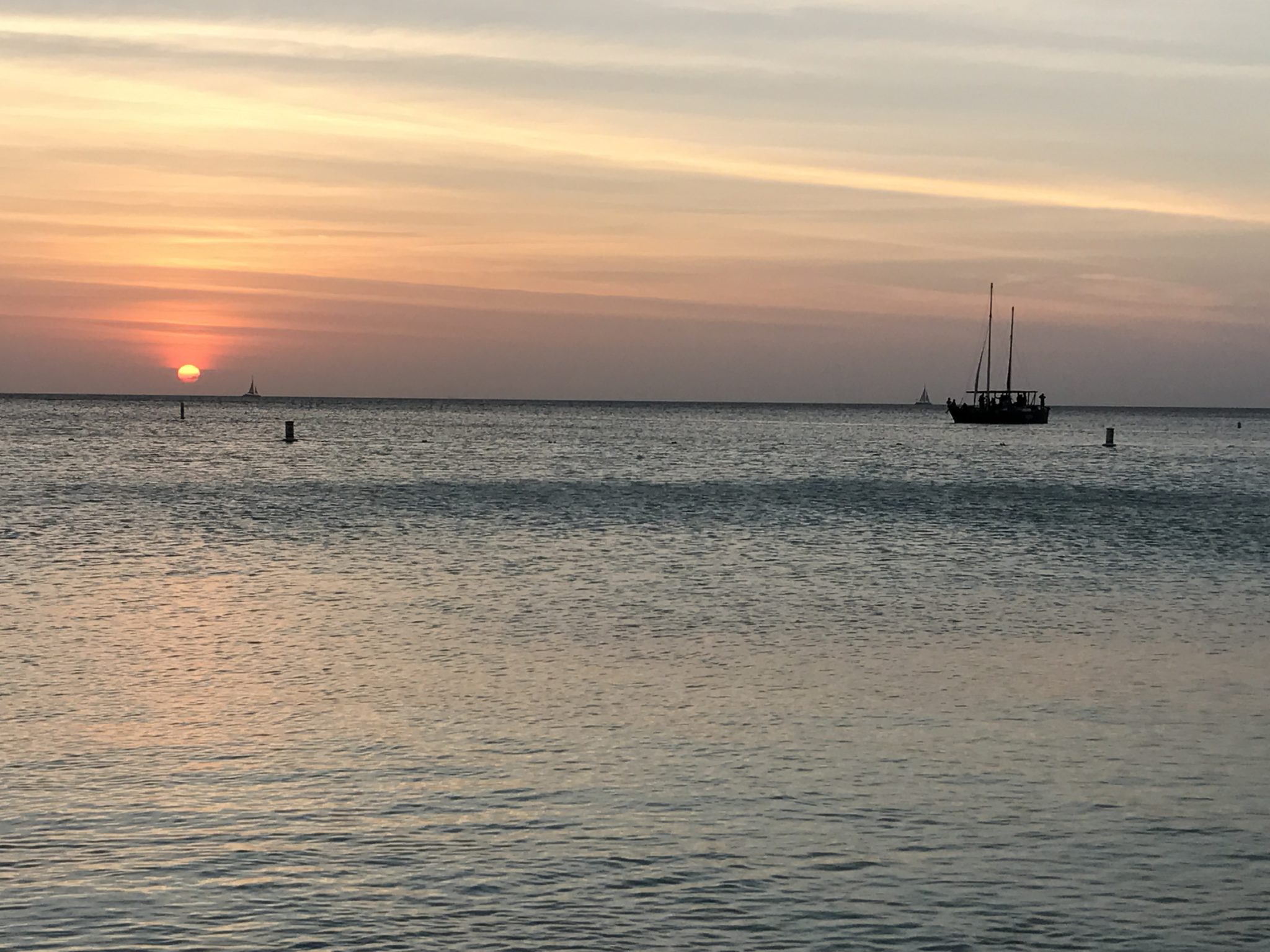
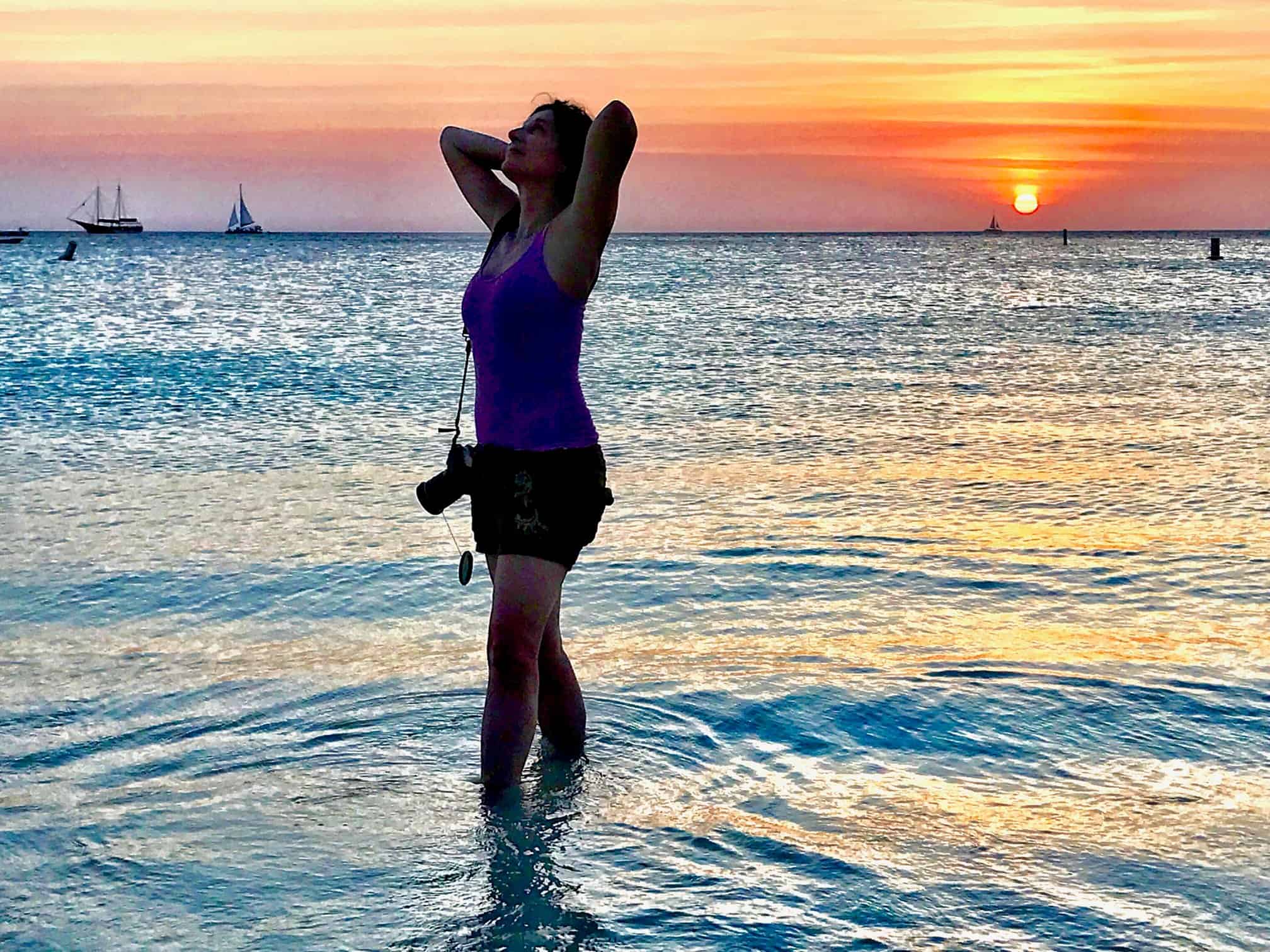
Above, taken right before my dinner at Atardi
Although I didn’t see them when I was there, sea turtles do their hatching on Eagle Beach. It is also loaded with fofoti trees which are oh so lovely.
Below, the beach in front of the Marriott
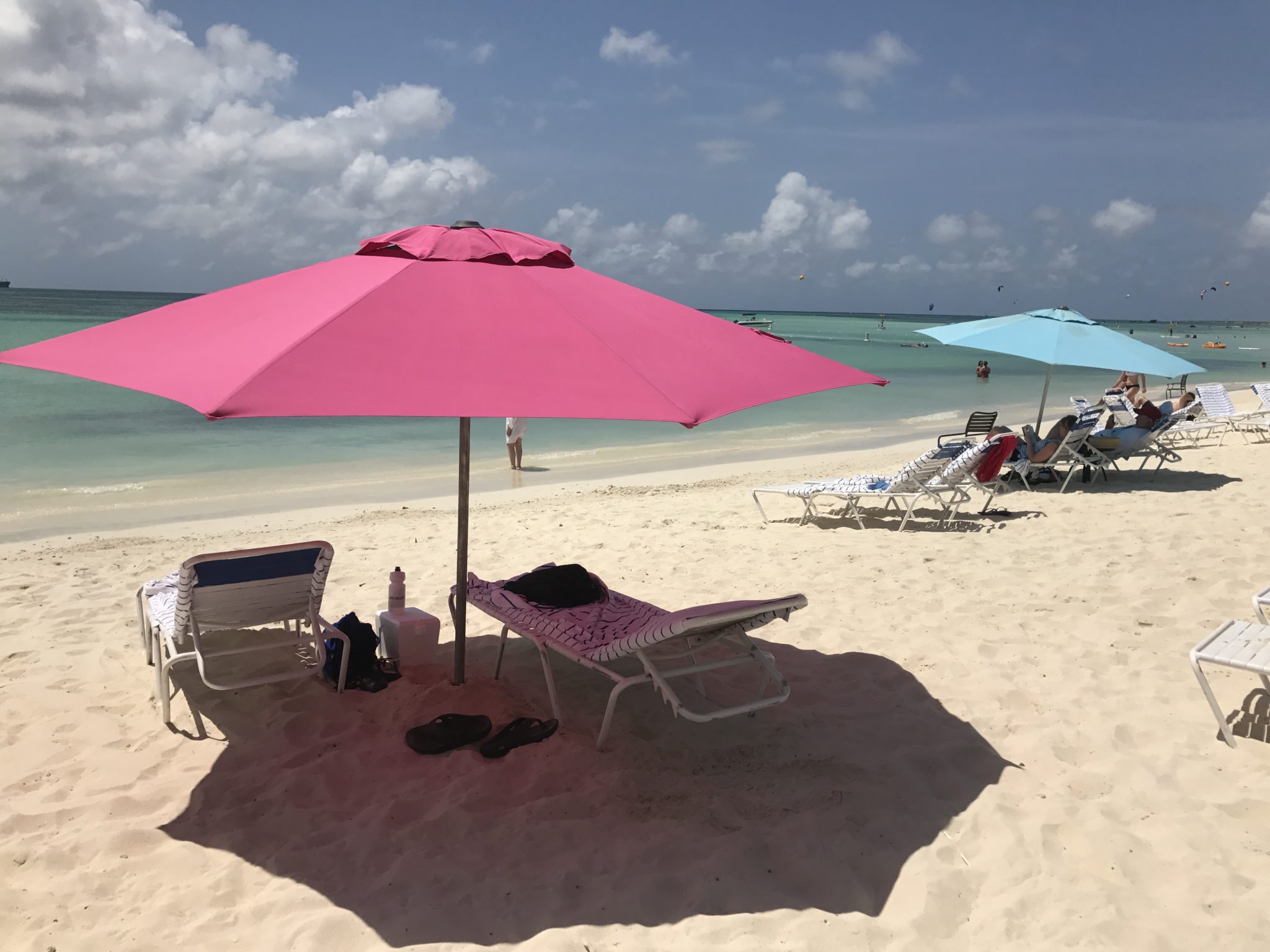
A swaying palm on the Marriott property
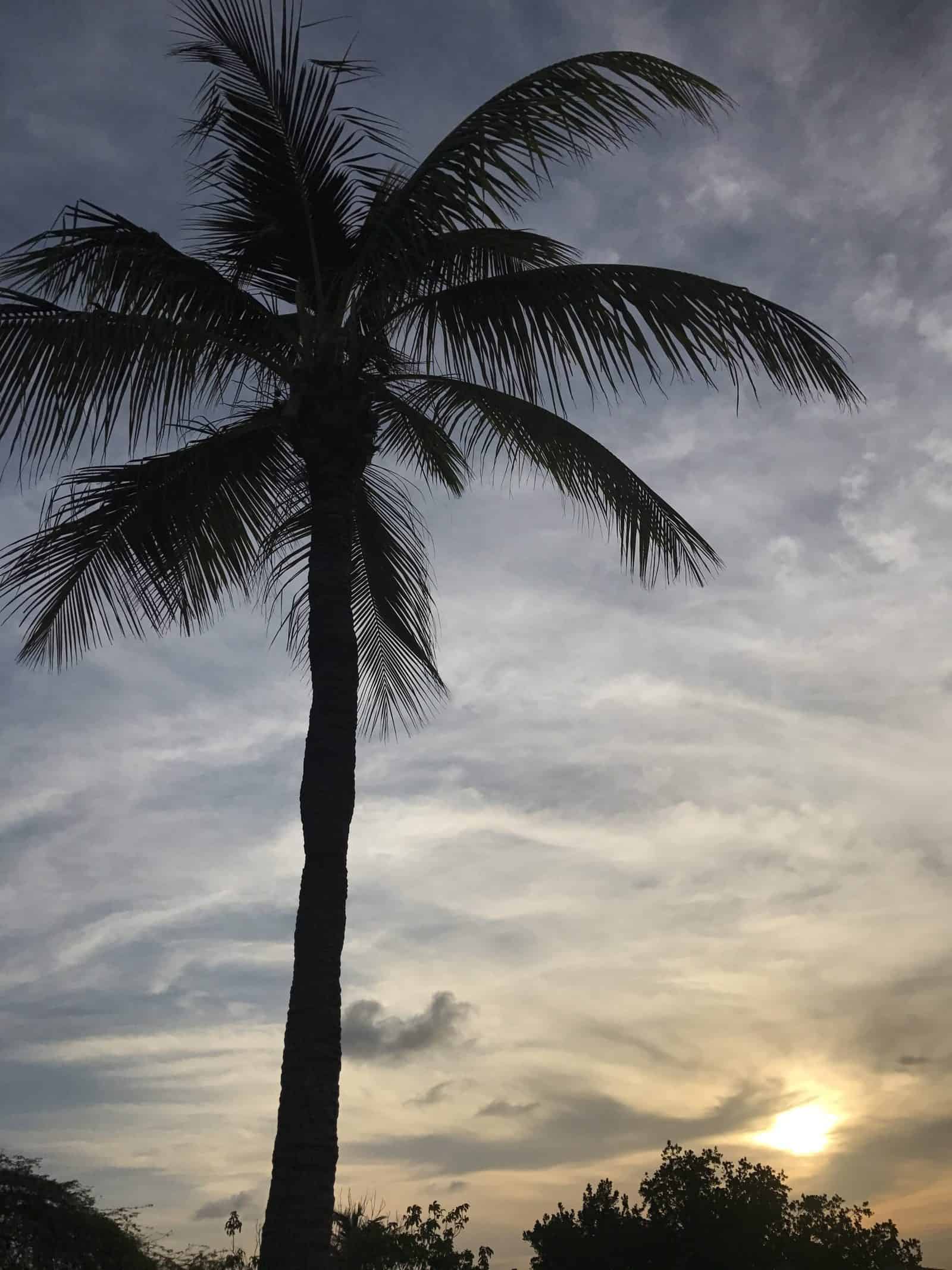
Beach at the Marriott
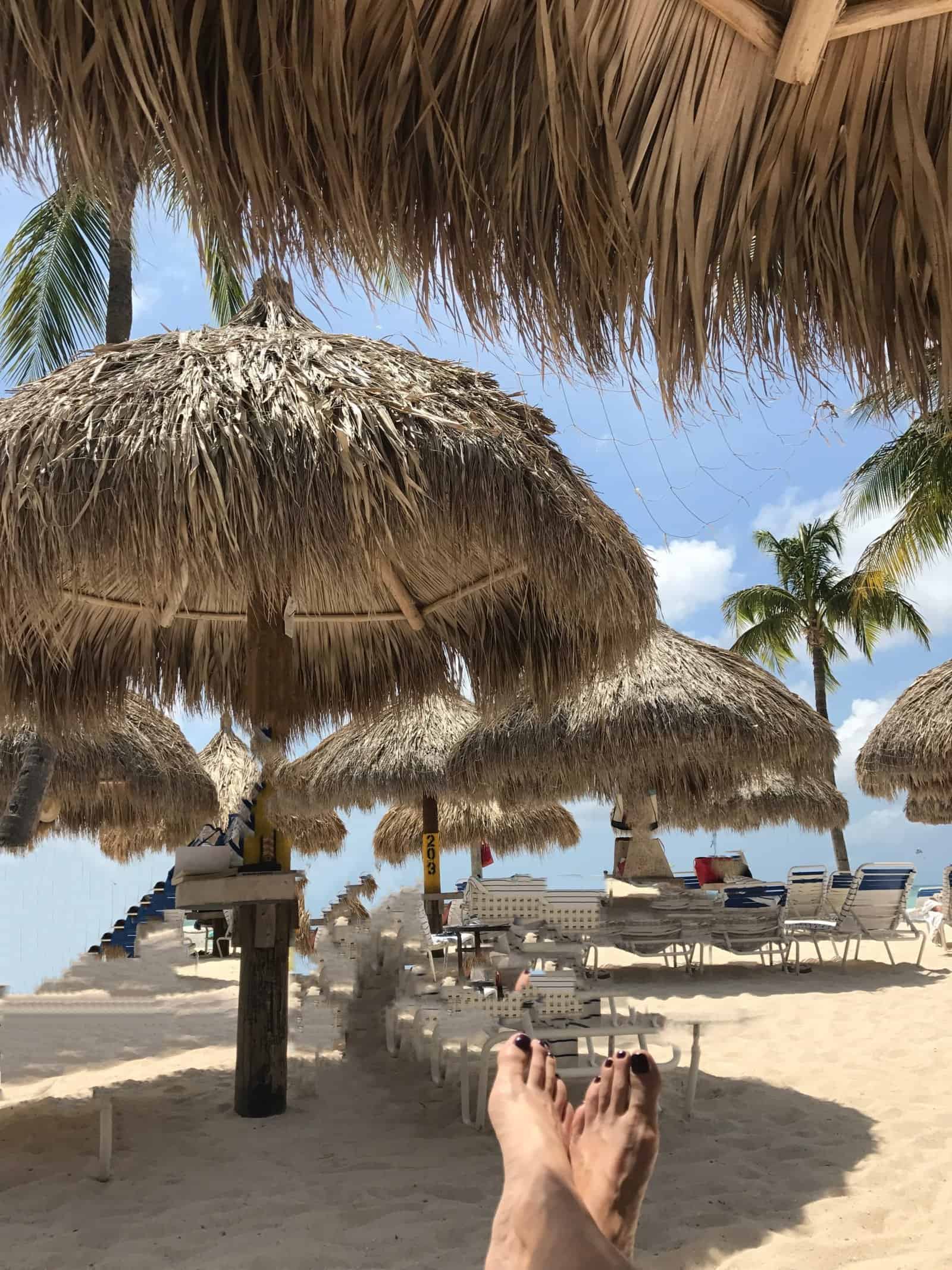
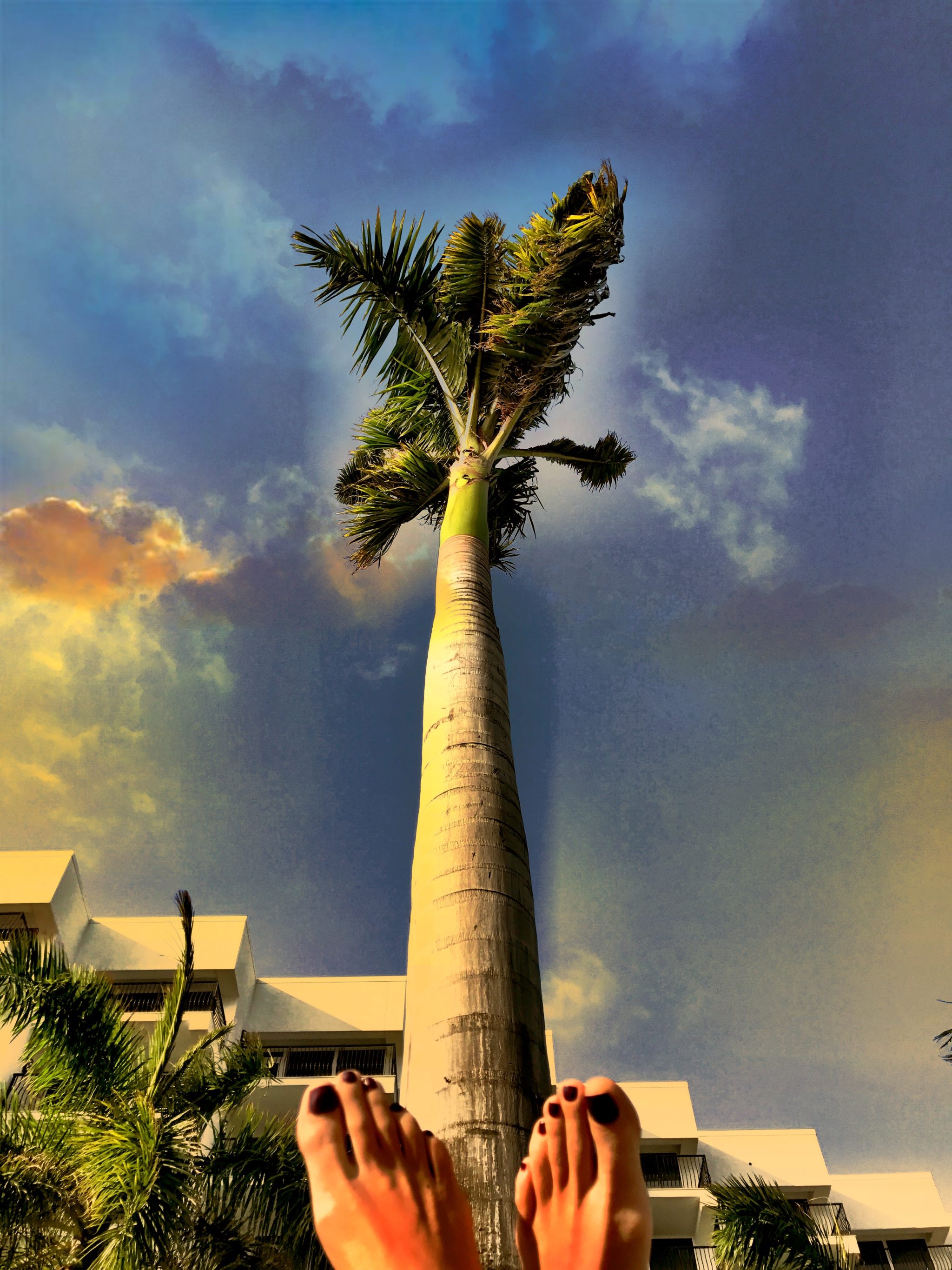
Activity and a bar facing the beach at nearby Moomba Beach.
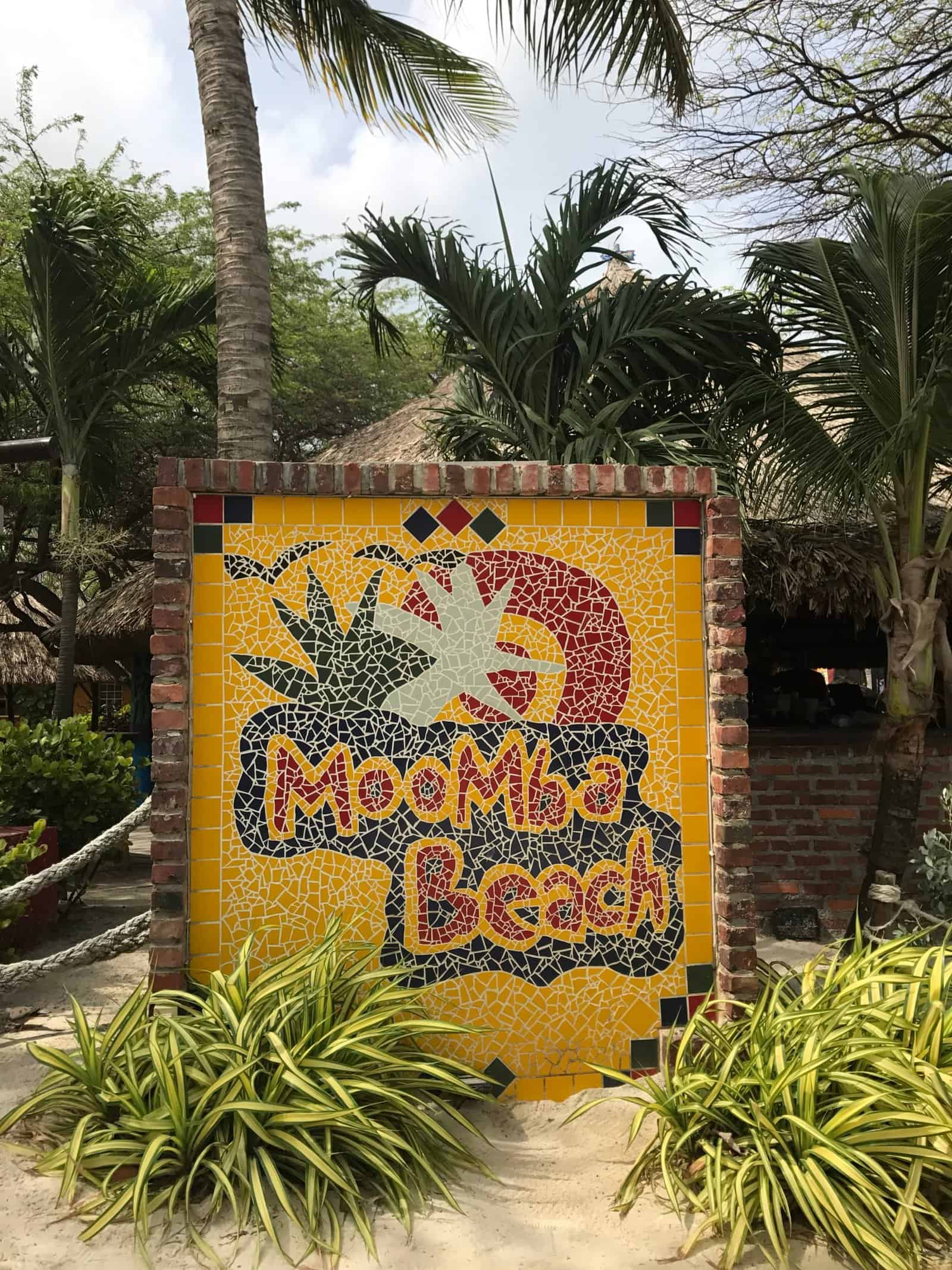
Druif Beach is pretty close to downtown Oranjestad, so it’s a stones throw from high rise hotels. The upside is that there’s plenty of restaurants, bistros and bars nearby.
Manchebo Beach is the island’s widest beach, offering numerous shaded cabanas and beach lounges, and where I stayed for part 2 of my Aruba stay. The sand is pure white and is also great for swimming and beach walks. Manchebo Beach has a few restaurants nearby, some of which face the beach, where you can enjoy a healthy lunch and order that long awaited Margarita or Mai Tai.
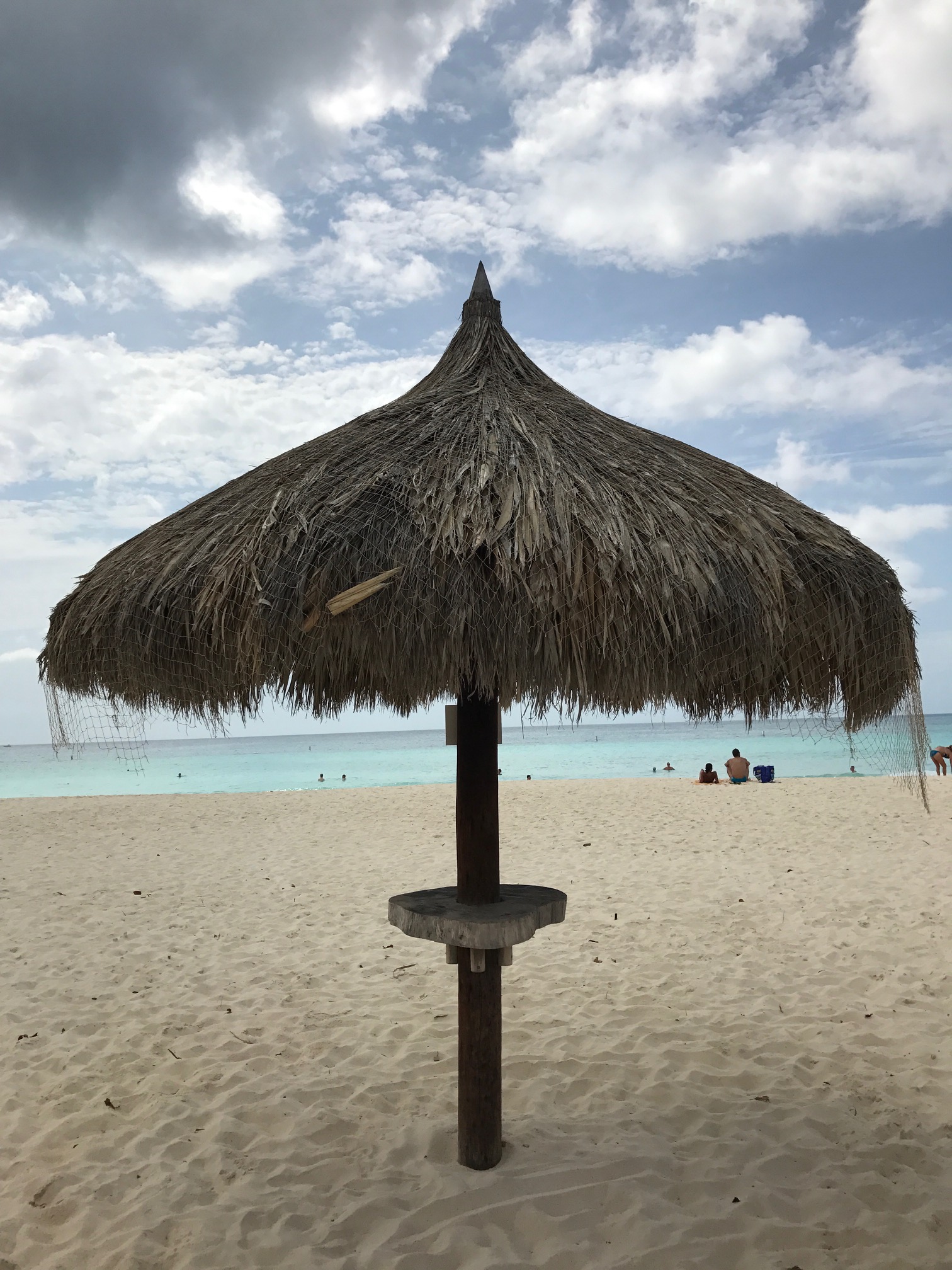
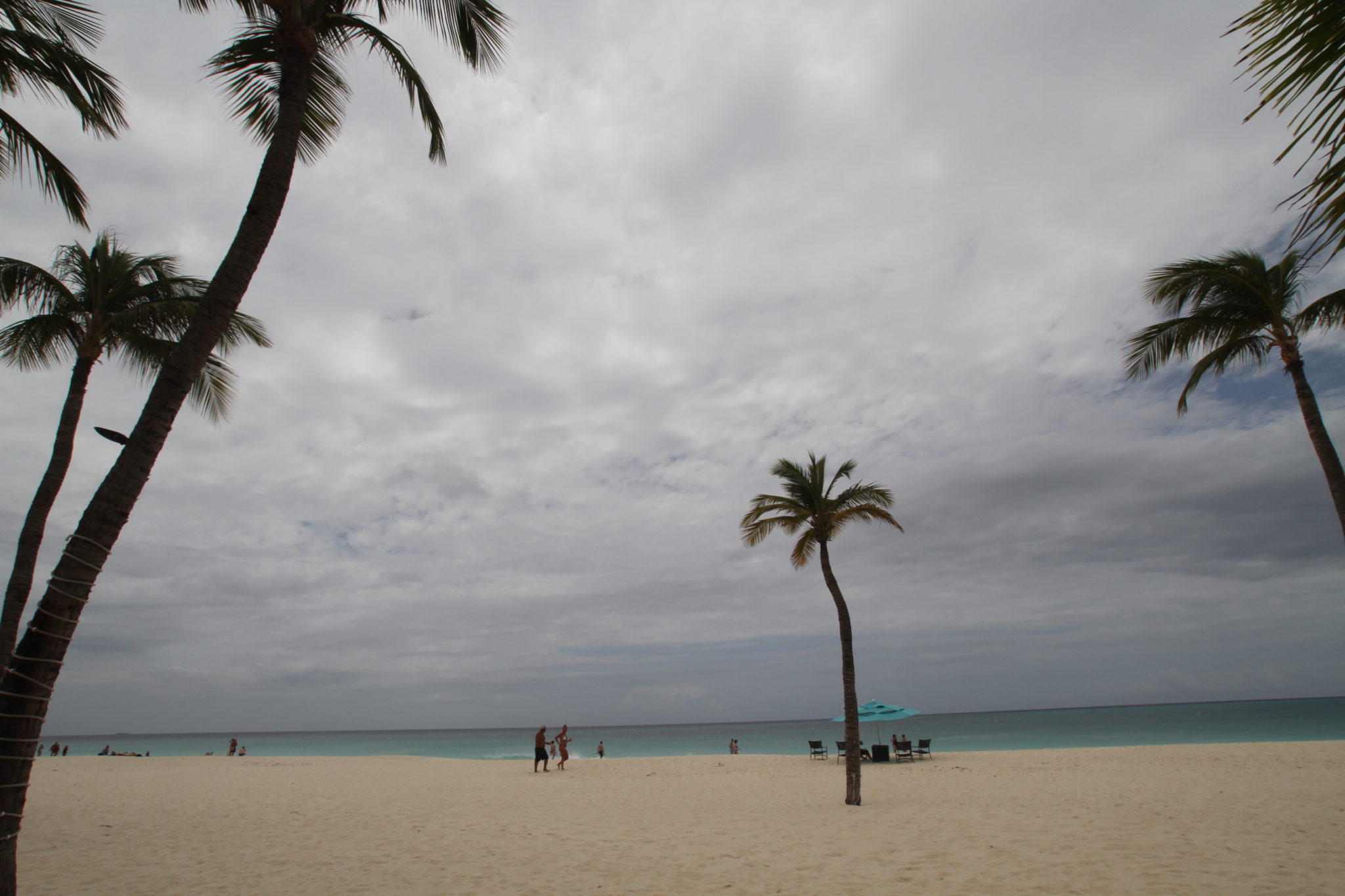
Below, I had lunch at Elements right on Manchebo Beach one day – pure bliss!
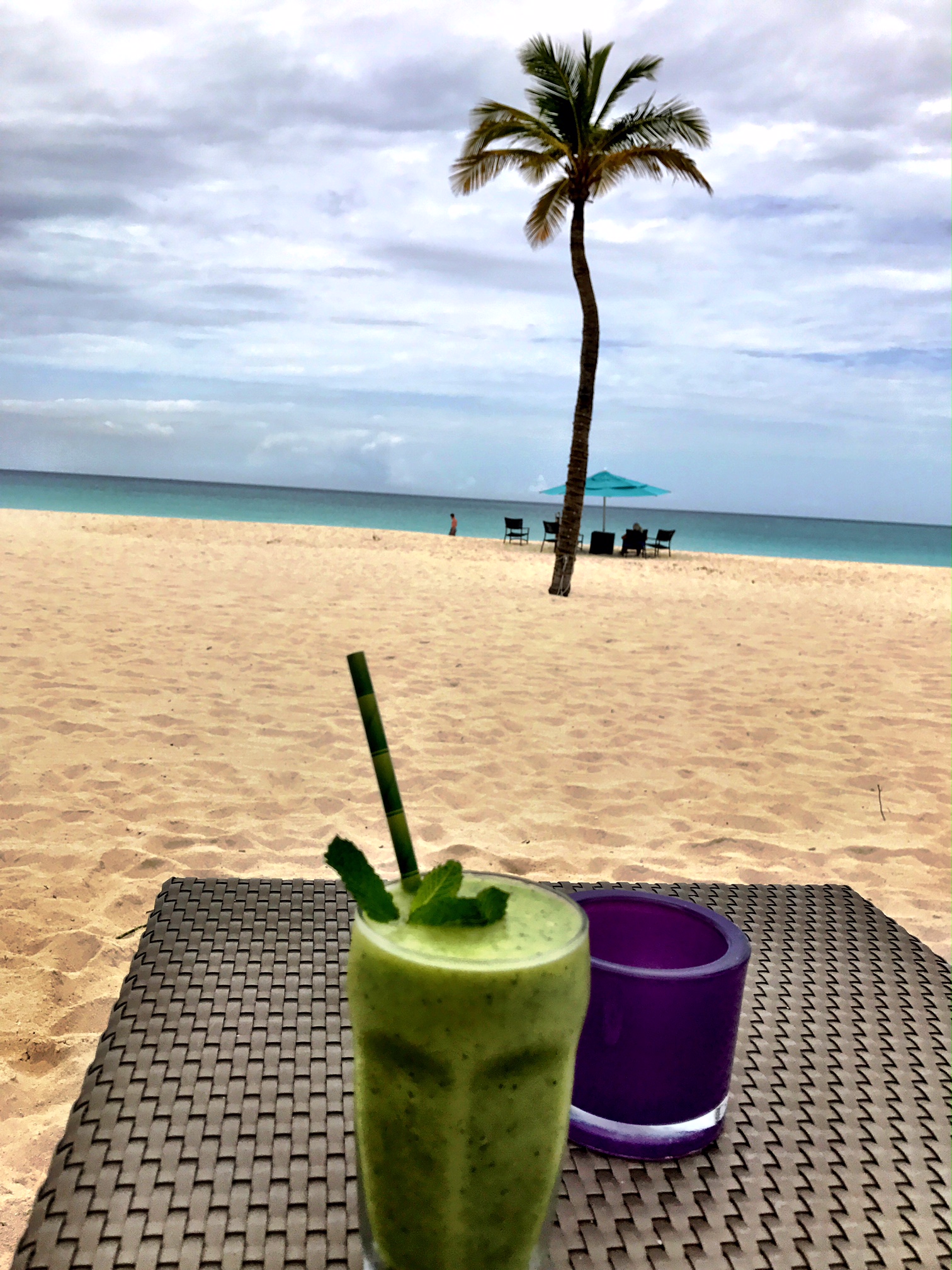
The last call out goes to Baby Beach on the East Coast, which I SO wanted to get to and didn’t have enough time. We tried to get there one day by boat but the winds were so severe that it would have taken us 4 hours return just to get there. Locals say its a great spot for snorkeling — there’s a ton of coral and tropical fish. You can get here faster by car but depending on traffic, you’ll still be looking at a healthy hour each way from Oranjestad.

Above: Baby Beach, credit Aruba.com.
Baby Beach is located at the southernmost point and why its a bit of a trek. Its apparently called Baby Beach because most of its water is less than five feet deep, making it super easy to snorkel at its man-made reef, which is very protected compared to many other spots.
Desert Color
Throughout Aruba, you’ll find colorful cactus in built up areas and in more spartan parts of the island.
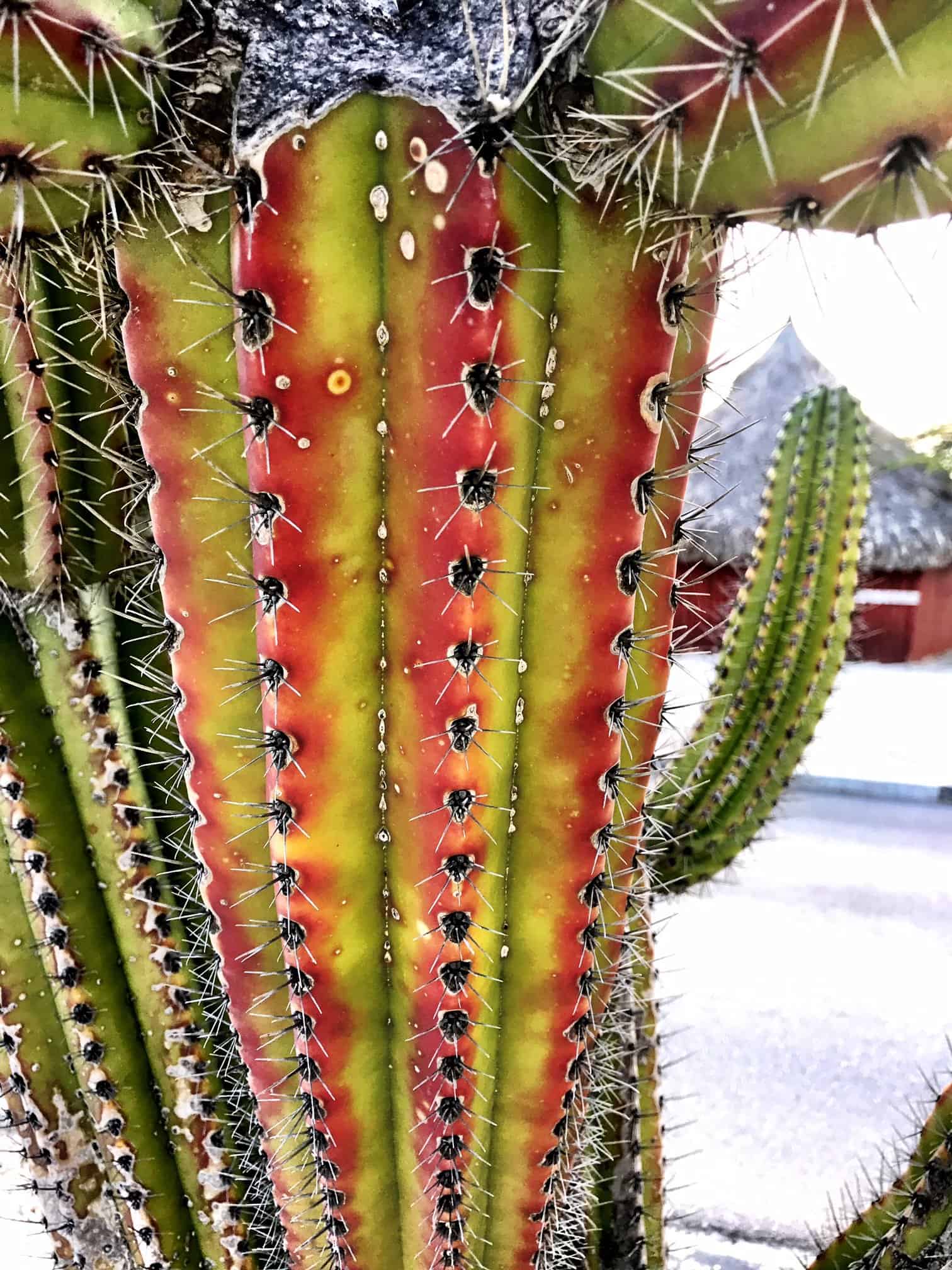
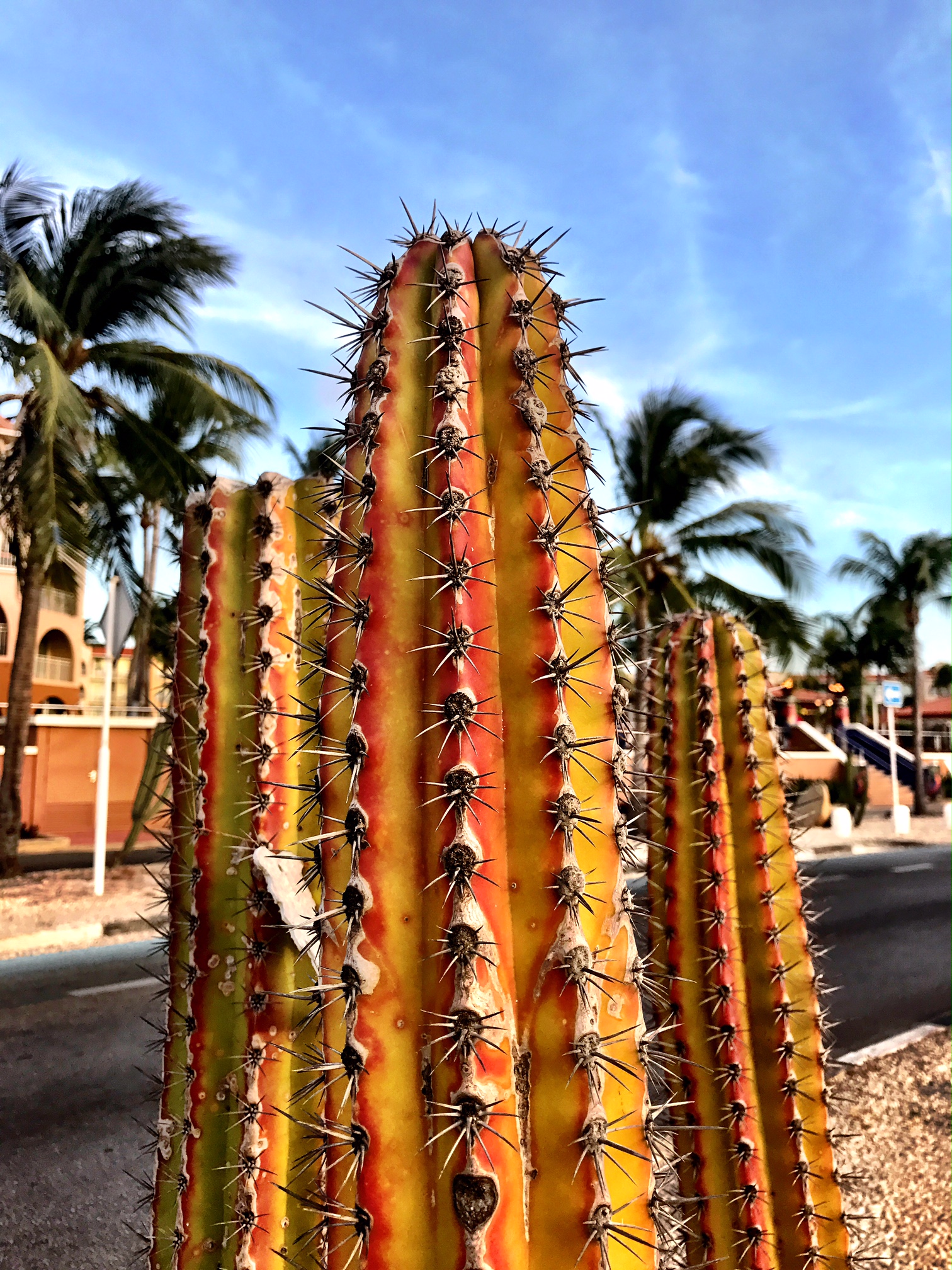

Above shots taken on my iPhone near Eagle Beach
Land Rover Adventures
Sure, you can rent bikes on the island (which is a fun day activity to do and you can get both electric and mountain bikes), but a 4×4 vehicle gives you so many other options. If you’re an adventure enthusiast, then I’d suggest getting out in a vehicle where you can cover more ground. Aruba offers Matchbox cars, a Raceway Park (the Bushiri Karting Speedway), something they refer to as blokarts, a three-wheeled land kart, an ATV, a Trike or even on a Segway, although they limit where you can go.
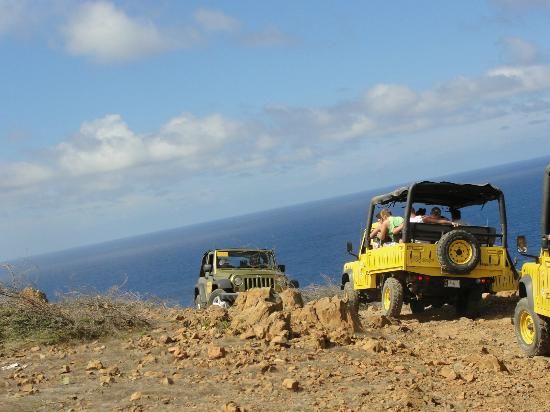
Photo credit: Red Sail Aruba / Aruba Tours on Pinterest, a great resource. Link below.
Useful Resources
- ABC Tours: www.abc-aruba.com
- Aruba Motorcycle Tours: www.arubamotorcycletours.com
- Bushiri Karting Speedway: www.bushirikarting.com
- Red Sail Sports: www.redsailaruba.com
- Scoot Tours Aruba: www.scoottoursaruba.com
- Trikes Aruba: www.trikes-aruba.com
The Butterfly Farm
Located on Palm Beach, butterfly lovers will appreciate this incredible farm dedicated to beautiful butterflies and their worlds. They offer educational tours as well for those wanting to dive a little deeper.
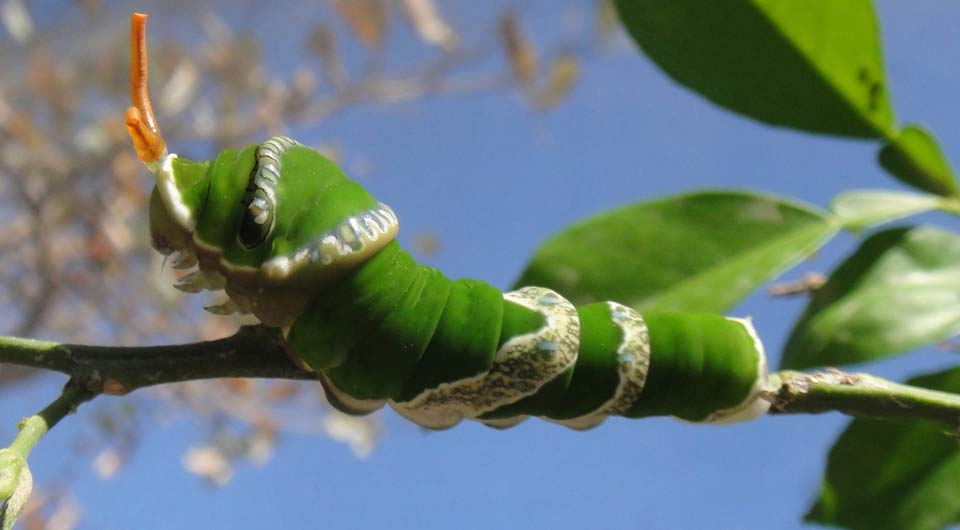
Photo credit: ButterflyFarm.com.
Its been around since 1999 and opened by the same guys who started a butterfly farm in St. Martin. Here, you’ll see hundreds of exotic butterflies from all around the world, including South America, South East Asia, Philippines, Australia, China, Africa, as well as some who are local such as the Caribbean Longwings and the Monarch. More information can be found at https://www.thebutterflyfarm.com/.

Photo credit: Aruba Butterfly Farm.
Aruba Ostrich Farm
I love ostriches and have many fond memories of hanging out with them when I lived in South Africa many moons ago. We ate ostrich eggs regularly when I stayed on a farm in northern Transvaal and I still have a few scattered eggs around the house. I’ve ridden ostriches a few times and fed them in Curacao a few years ago, which is also home to a Caribbean ostrich farm. (see my article)
I was thrilled to learn that Aruba had one as well and they boast a 80-count flock of the largest living species in the world.

Photo credit: ArubaTourism.com.
They offer tours which provide the opportunity to learn about the natural behavior and survival instincts of these amazing creatures through education and personal encounters with the birds. Afterwards, you can take in the panoramic views of the island’s northern coast while drinking a fruit drink or beer from the bar. More information can be found at http://www.arubaostrichfarm.com/.
Cruises & Boat Outings
I didn’t have an opportunity to take the Monforte III Luxury Cruise when I was there, as it was booked up and I was leaving the next day however I saw them from another boat cruise I took along the coast. It is apparently one of the newer and more luxe experiences on the island.
The vessel came from a coastal town in Brazil and took a month to get to Aruba. The Monforte III moors in the bay of the Palm Beach, right in front of Pelican Pier and does daily excursions.
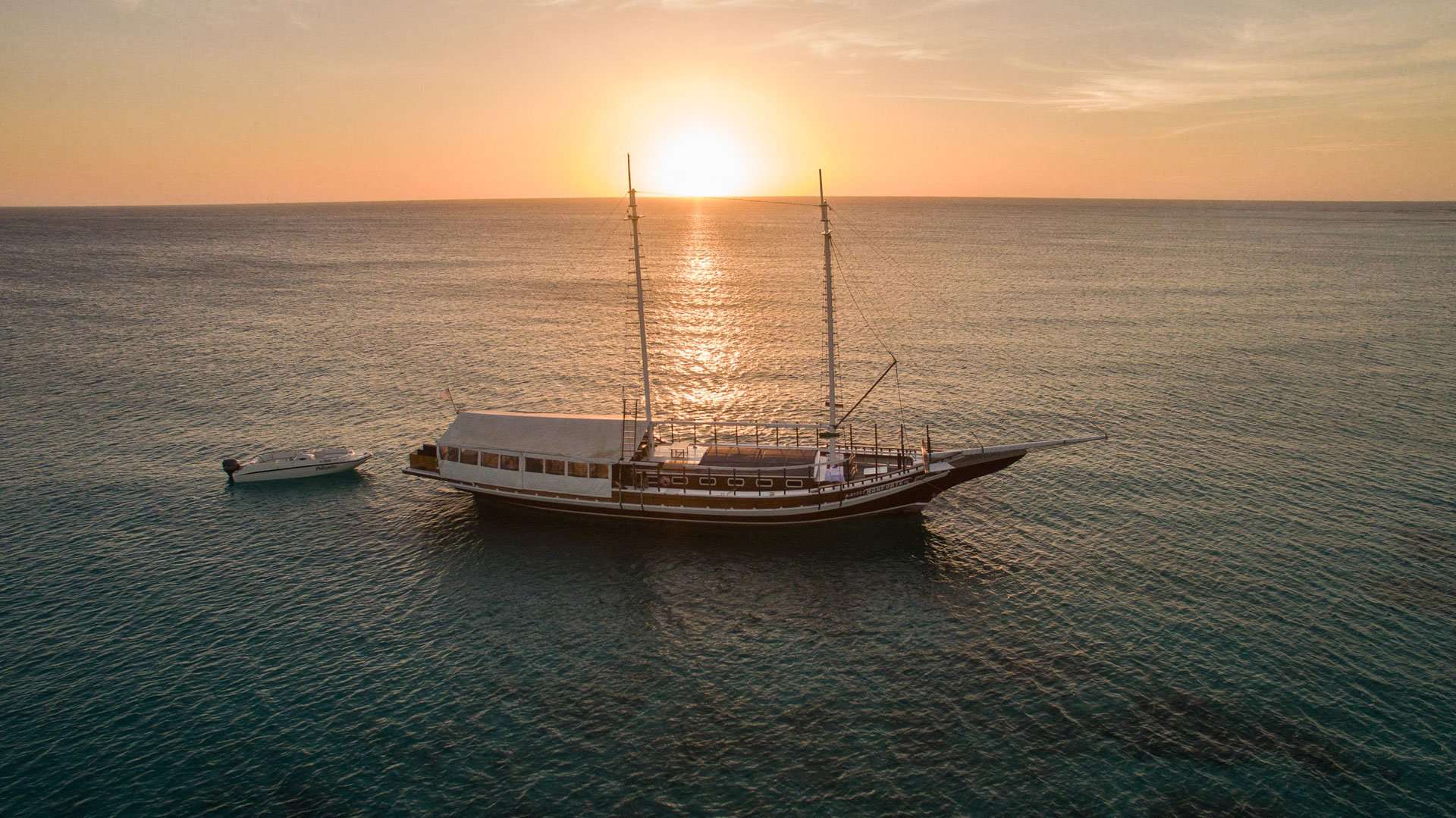
Photo credit: Monforte Cruise.
Your day on the luxury 115-foot Teak Schooner Monforte III includes access to the tropical coves and white sandy beaches for swimming and snorkeling, as well as the opportunity to take in a beautiful Aruba sunrise on a boat. More information can be found at http://www.monfortecruise.com/.
There’s also Dutch-born Hans Loos, who moors his powerboat nearby. He’ll take you out and you can pay him what you think his experience is worth, plus gas of course. He doesn’t really have a website, but you can reach him at 297.737.7453, to ask him about availability and options.
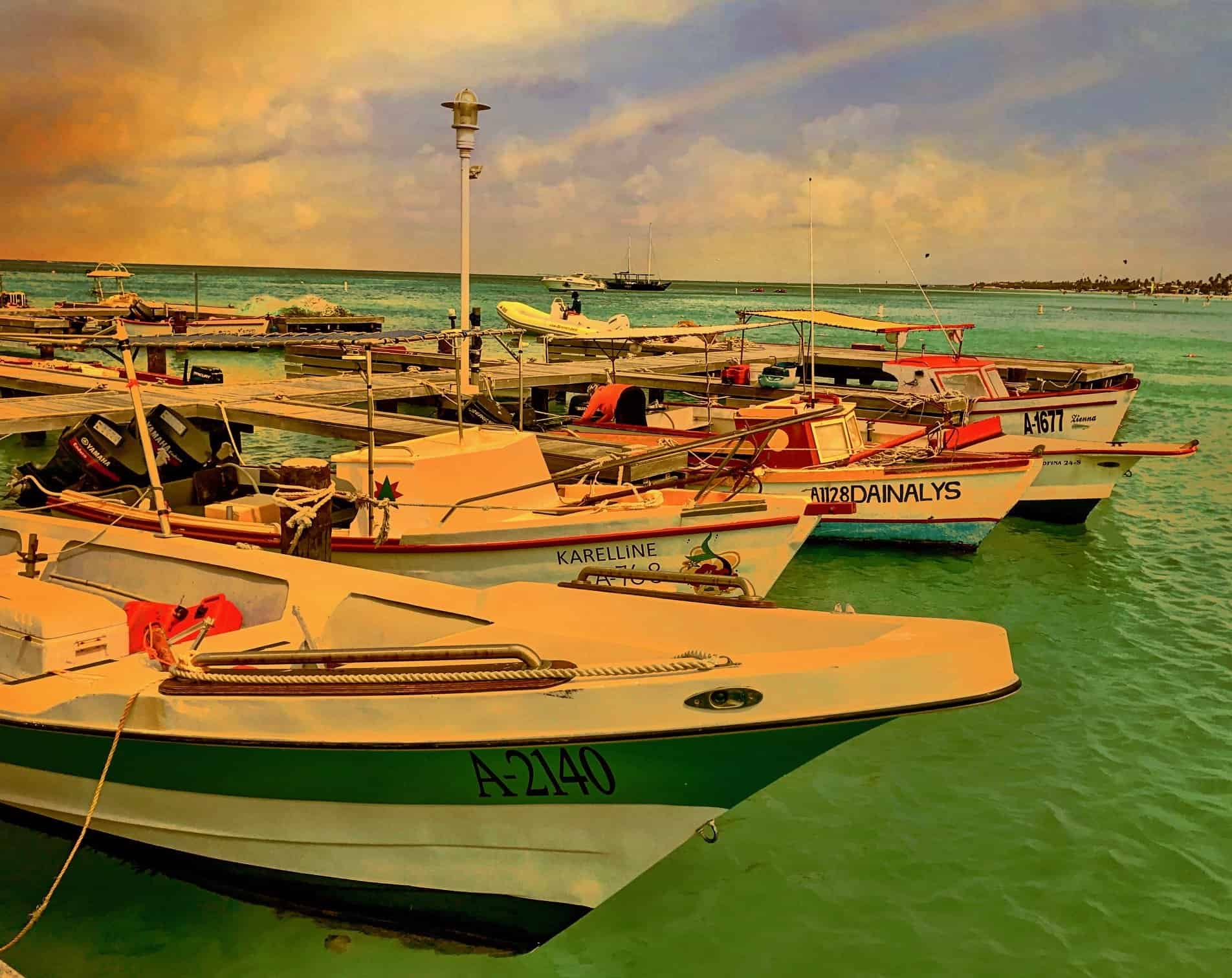
We went up and down the coast where I took in tons of great sites; unique trees in the middle of the ocean like the shot I captured below as well as lovely views of the mainland.



Above, Hans Loos in his boat, taken with a fisheye lens on my phone. Below, other sailboats, schooners, powerboats and beyond dock their boats at a marina.
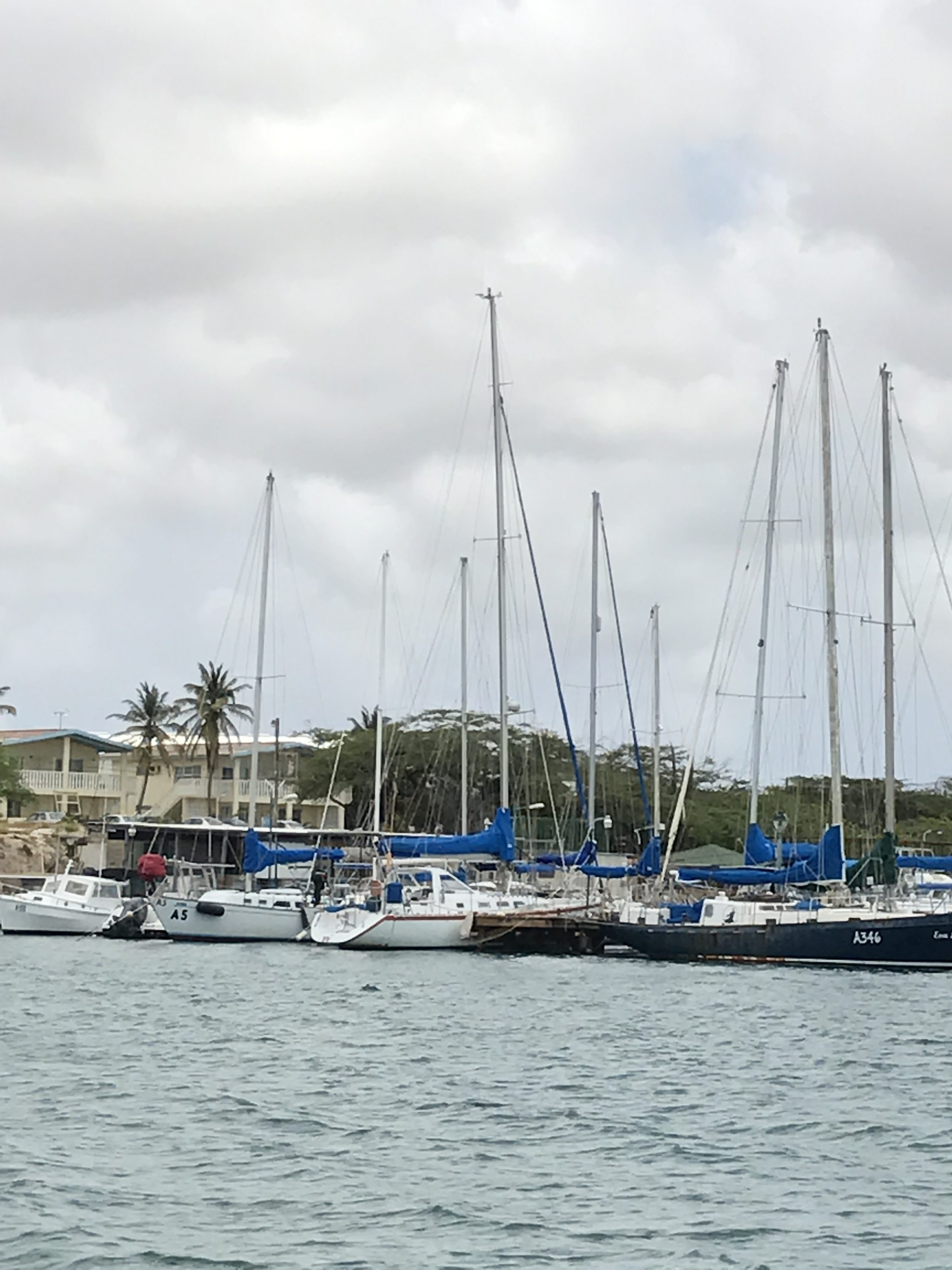

Off in the distance, you can see one of the large cruise lines making its way to shore.
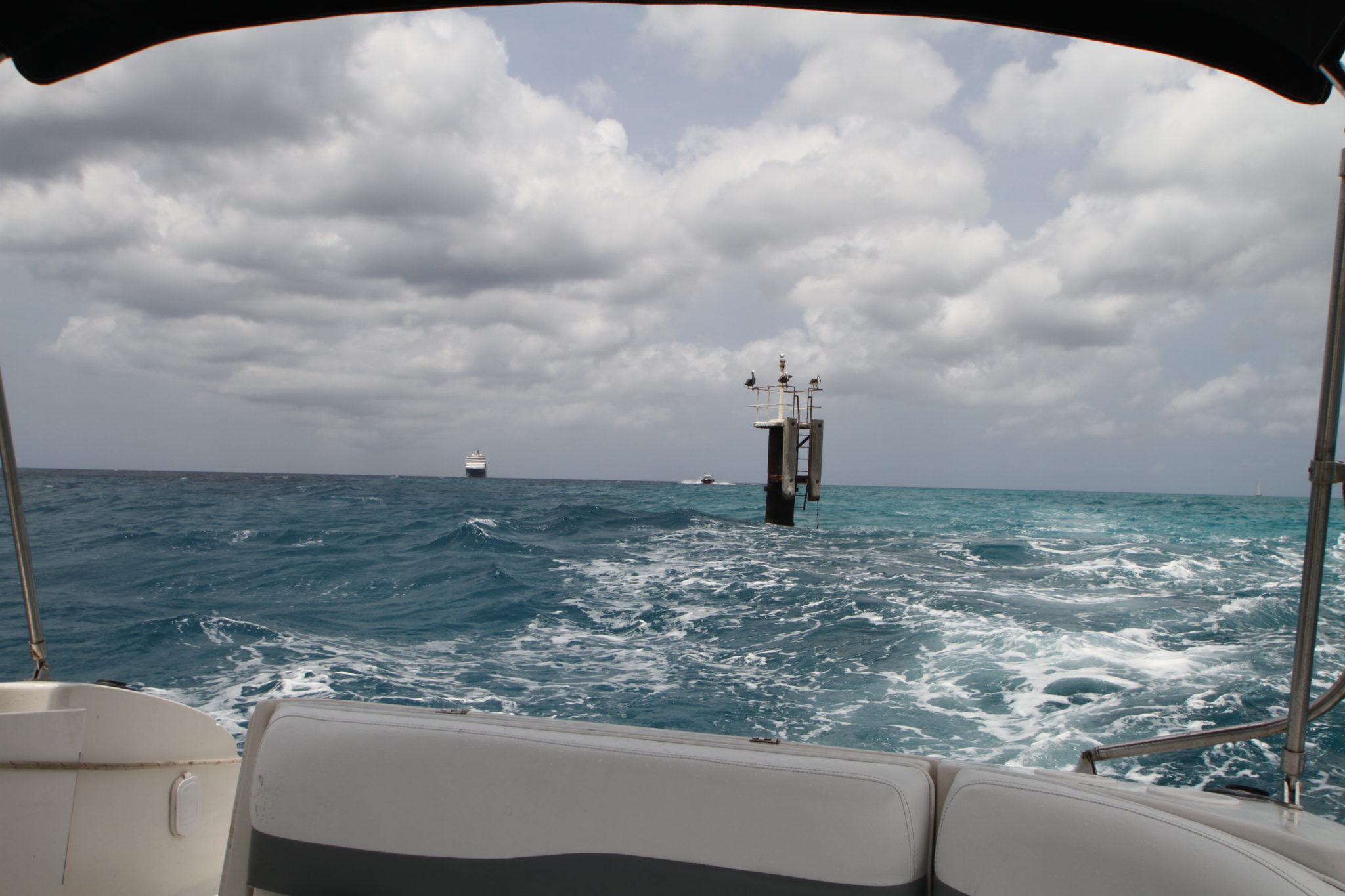
Cats and other sailboats in the nearby distance, some of them anchored while they swim or snorkel, which we did off the back of his boat as well.

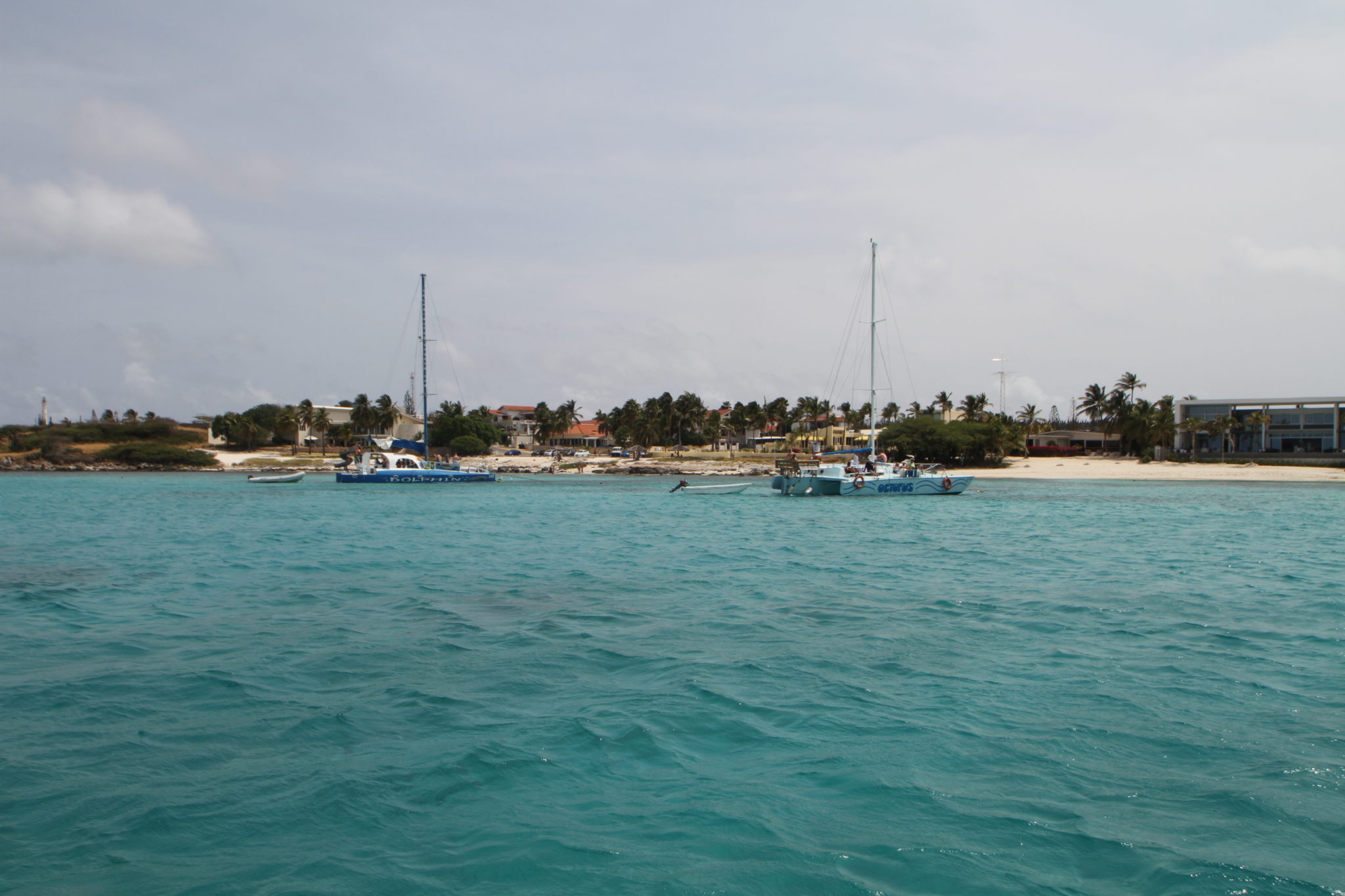

Above, I ran into one of the Monforte III boats a day before I learned about their luxury tours.
I did swim as we anchored a few times on our trip. I didn’t see much coral underwater (I had a mask and fins) but you can see dolphins and other fish off the side of the boat.


Above two shots, taken on Hans phone.
Culture, Wellness, Music, Bars
This guide is focused more on adventure and nature rather than culture, wellness, music, bars and nightlife. That said, there are bars as well as casinos on the island, including at the Marriott where I stayed — it makes a great family stay and their bartenders make great cocktails. For other family stay and do stories, check out our Family Travel section.
As for food, it’s one of my passionate past times and we have no shortage of restaurant reviews and food guides on We Blog the World. And those who are serious foodies know that I post regularly on my @LuxuryFoodies Instagram feed. A reminder to foodies to check out my Aruba Foodie Guide which explores many of the restaurant, eatery and bistro options on the island, including a well renowned food truck.
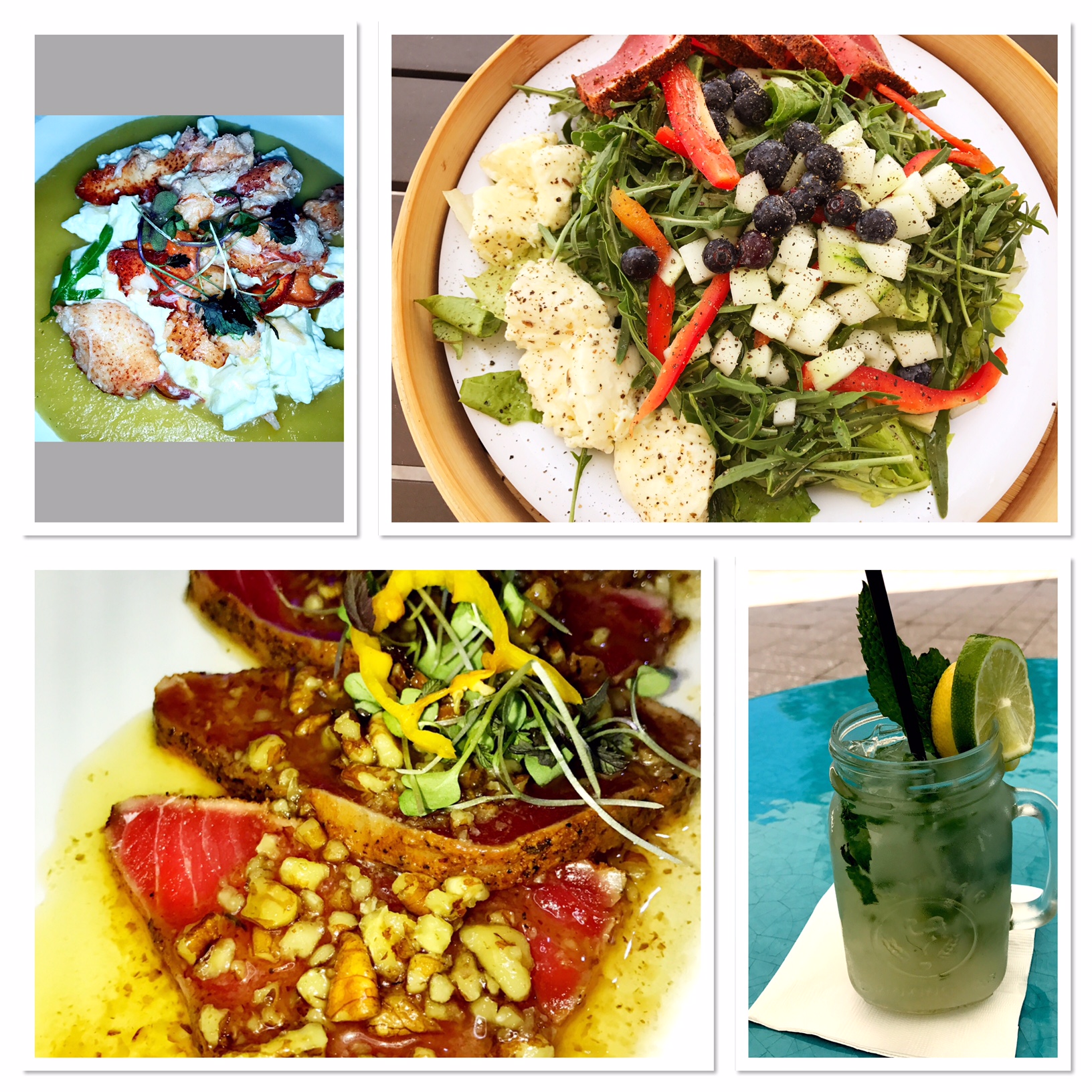
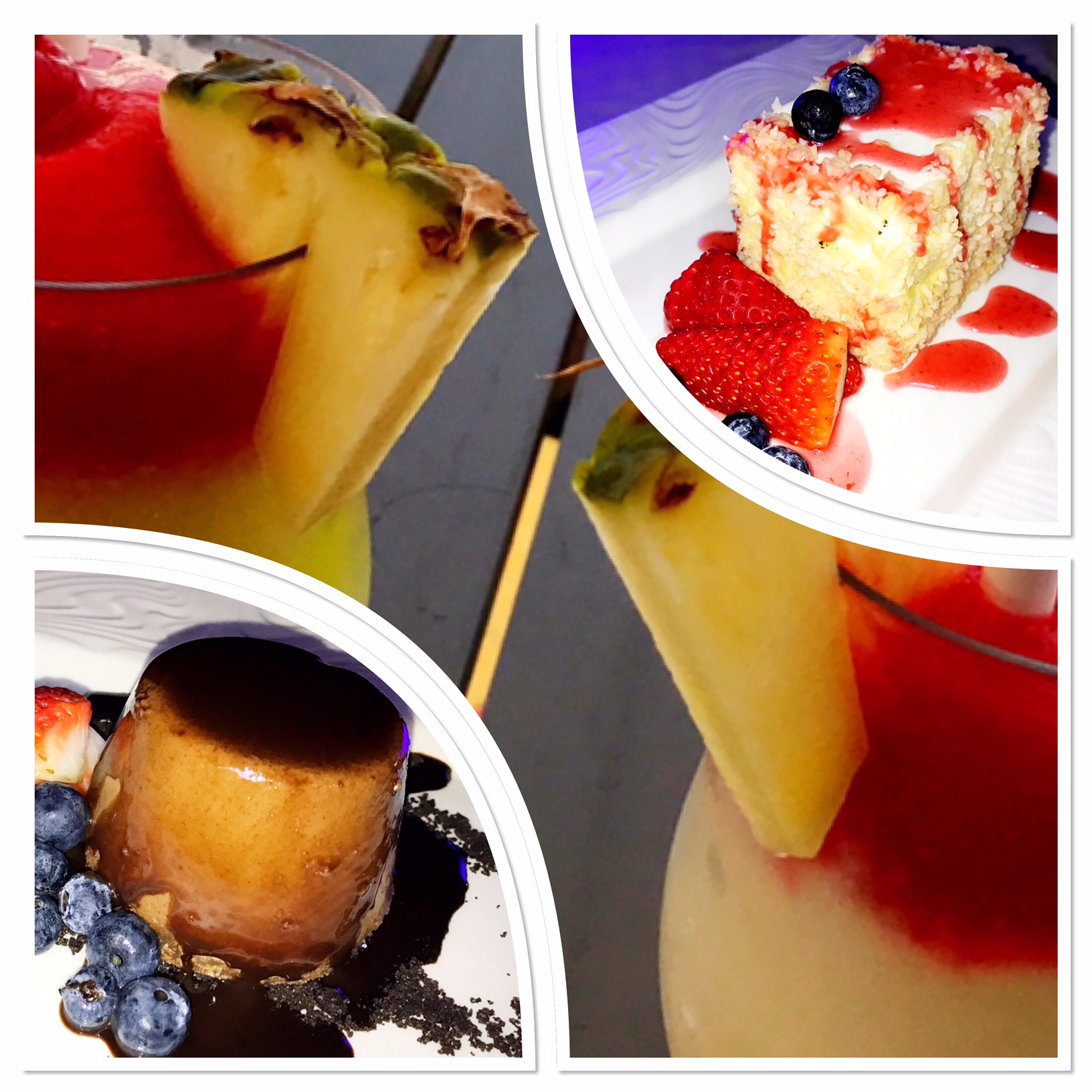
Above, food and cocktail heaven at Atardi right on the beach, lovely by day, evening and especially at sunset.
Below, some quirky fun you’ll find on the island.


Below, a man I chatted with on the bus on my way to Eagle Beach one day.

Lounge time at the Marriott on my first day, cocktail in hand.
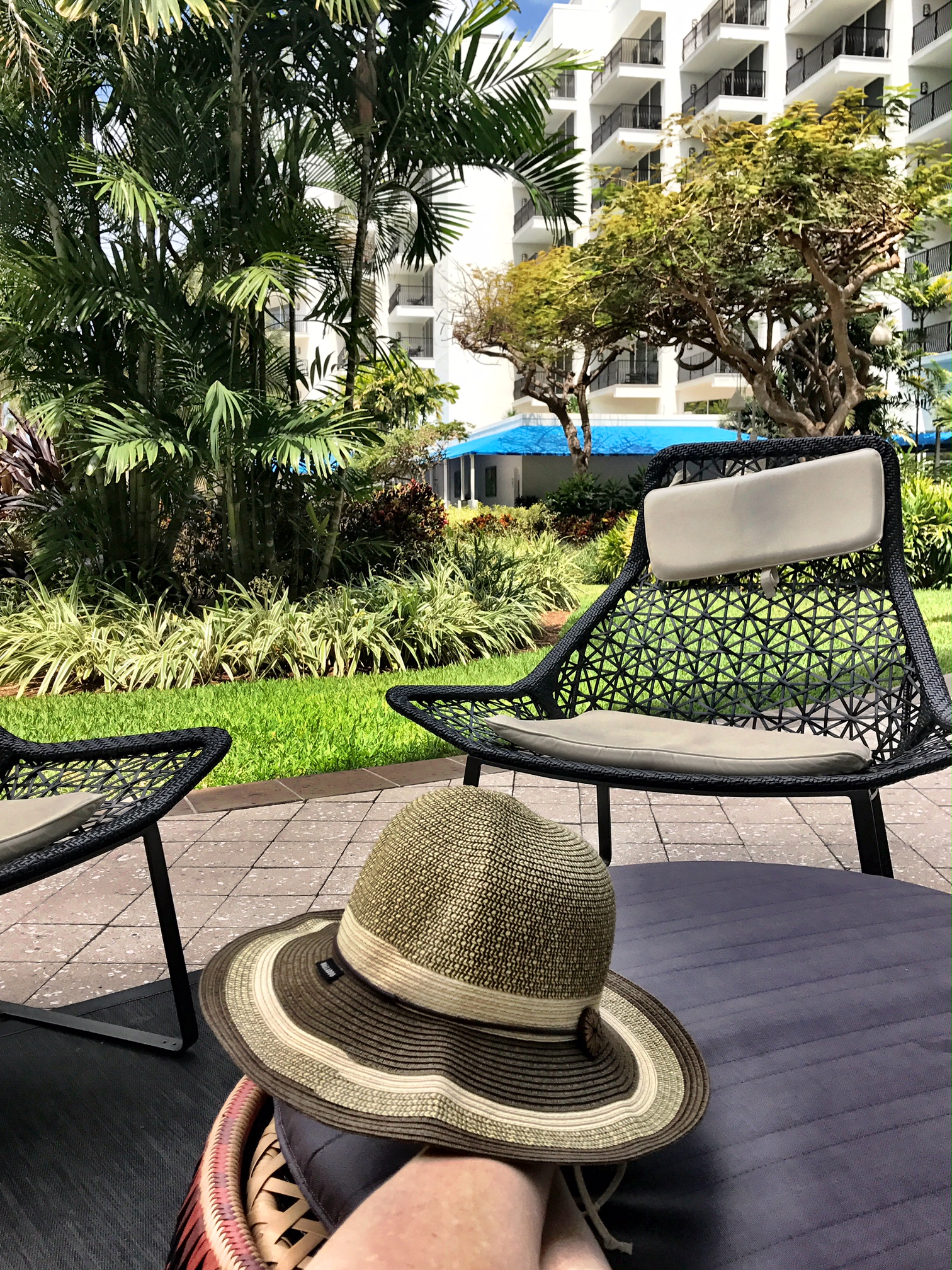
Wellness & Spa Travel
If you’re a wellness junkie, a yogi or simply trying to live a more healthy life on and off the road, be sure to check out my write-up on Manchebo, which has daily yoga classes and a wellness spa on the premises. Luxury spa gals can head to Pure Indulgence Spa not just for massages and facials, but they have a full salon as well and specialize in weddings and special events.

Above, how I started my experience at Pure Indulgence Spa.
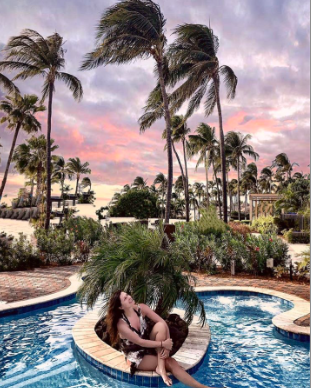
Above, relaxing at the larger hot tub at the Aruba Marriott Resort around sunset. Pure bliss.
Be sure to check out our Wellness Travel Section, wellness stays and general spa reviews as we’re expanding our coverage of wellness travel in general.

Renee Blodgett is the founder of We Blog the World. The site combines the magic of an online culture and travel magazine with a global blog network and has contributors from every continent in the world. Having lived in 10 countries and explored nearly 80, she is an avid traveler, and a lover, observer and participant in cultural diversity.
She is also the CEO and founder of Magic Sauce Media, a new media services consultancy focused on viral marketing, social media, branding, events and PR. For over 20 years, she has helped companies from 12 countries get traction in the market. Known for her global and organic approach to product and corporate launches, Renee practices what she pitches and as an active user of social media, she helps clients navigate digital waters from around the world. Renee has been blogging for over 16 years and regularly writes on her personal blog Down the Avenue, Huffington Post, BlogHer, We Blog the World and other sites. She was ranked #12 Social Media Influencer by Forbes Magazine and is listed as a new media influencer and game changer on various sites and books on the new media revolution. In 2013, she was listed as the 6th most influential woman in social media by Forbes Magazine on a Top 20 List.
Her passion for art, storytelling and photography led to the launch of Magic Sauce Photography, which is a visual extension of her writing, the result of which has led to producing six photo books: Galapagos Islands, London, South Africa, Rome, Urbanization and Ecuador.
Renee is also the co-founder of Traveling Geeks, an initiative that brings entrepreneurs, thought leaders, bloggers, creators, curators and influencers to other countries to share and learn from peers, governments, corporations, and the general public in order to educate, share, evaluate, and promote innovative technologies.








